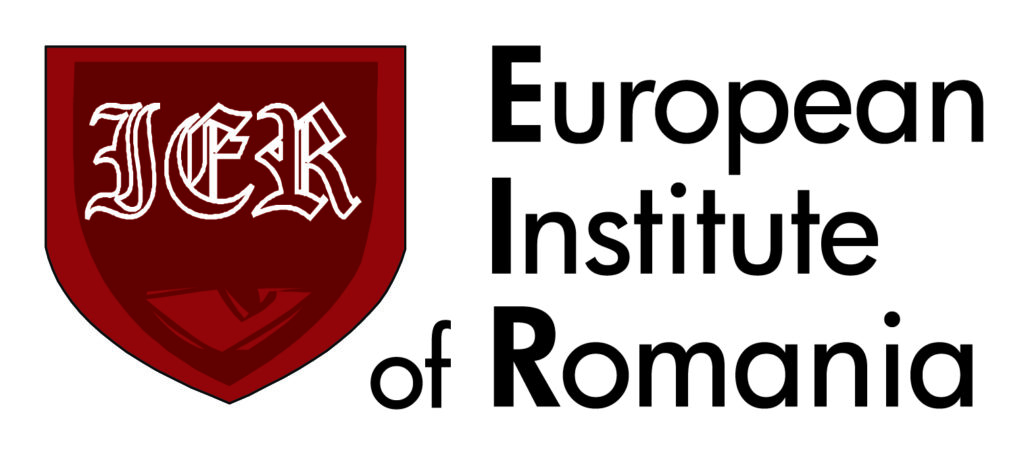Authors: dr Aleksander Olech, dr Jacek Raubo
The analysis in a nutshell:
– At the level of the European Union, the concept of creating an army of the European Union has been considered for years.
– European countries will soon have to take greater responsibility for the security of the continent and reduce dependence on the United States resulting from the functioning of NATO today.
– Russia’s invasion of Ukraine gave a new impulse to work on the concept of cooperation within the Three Seas.
– The Three Seas Initiative has less military potential but is more threatened by Russian aggression.
The Three Seas Initiative (or simply the Three Seas) was established in 2015 as a format for cooperation of countries lying between three seas: Adriatic, Baltic and Black. There are 12 member states: Austria, Bulgaria, Croatia, Czech Republic, Estonia, Hungary, Latvia, Lithuania, Poland, Romania, Slovakia, and Slovenia. Most of them in recent years were the fastest-growing members of the European Union. Today, the Three Seas Initiative is primarily economic and political. However, due to growing international tensions, including Russia’s invasion in Ukraine, it is necessary to extend the format to include a defense dimension.
It is worth noting that today nine out of twelve countries in the region cooperate militarily within the framework of the so-called Bucharest Nine (B9), consisting of the countries of NATO’s eastern flank. By extending cooperation to the entire region, within the framework of the Three Seas, the cooperation would be joined by Austria (it would have to break with its “neutrality” and abandon its very often pro-Russian policy ⸺ for example in terms of energy cooperation), which is not a member of NATO, Croatia and Slovenia, which constitute the southern flank of the Alliance, and Ukraine which remains outside NATO and which has been a partner country of the Three Seas Initiative since the Riga summit. Wider military cooperation as part of the Three Seas Initiative does not have to replace the B9, but will rather be an extension of political, economic and social relations that serve to strengthen ties for security.
The power of the Three Seas “only” in the numbers concerning the armies
Among the countries participating in the Three Seas Initiative, Poland has the largest army and Estonia has the smallest. The following data account for active soldiers only, without reservists.
If the troops of individual countries in the region were to be combined into a single Tri-Sea army, it would consist of almost 350,000 soldiers: 22,500 from Austria, 25,600 from Bulgaria, 15,200 from Croatia, 26,800 from the Czech Republic, 6,600 from Estonia, 16,300 from Lithuania, 7,000 from Latvia, 120,000 from Poland, 65,000 from Romania, 12,900 from Slovakia, 7,000 from Slovenia and 22,700 from Hungary.
It would not be an overstatement to say that in this hypothetical army the foundation would be Polish Armed Forces. In addition to having the largest number of soldiers, they have made significant investments in armaments in recent years, i.e. purchase of Abrams and F-35s, as well as implementing the Miecznik program, under which three frigates worth PLN 8 billion are to be built. Also noteworthy are the fairly large orders made after the Russian invasion in Ukraine.
Apart from Poland, Romania has also started investing heavily in the military, an example of which is the order for the Gowind corvettes or the purchase of HIMARS launchers. In addition, Estonia decided to arm the coast by creating a land-based missile unit using the Blue Spear 5g SSM missiles. Lithuania chose the Caesar howitzers. Croatian purchases from the French and the order of twelve Rafale fighters and the Patria AMV military vehicles already owned by the Croatian army are also noteworthy.
Still, the greatest advantage in the context of military cooperation remains the ability to react collectively within NATO. It is also the foundation of the security of the countries in the region, which transfers to political support for the Alliance and further strengthening of NATO’s eastern flank.
The Three Seas Army ⸺ within or outside NATO?
The concept of an “integrated armed forces” of the Three Seas countries can be considered in two categories ⸺ conventionally counter-NATO and NATO. The first one emerges from the thesis that the existing pillars of the security architecture in the region (NATO and the EU) are insufficient. Its greatest advantage is the potential orientation of defense investments and integrated military potentials in a homogeneous vision of threats, primarily from Russia. This kind of thinking, however, has a fundamental disadvantage, consisting in a significant simplification of the policies of individual Three Seas countries. Even the current Russian aggression against Ukraine (since February 24th, 2022) has not been able to create the foundations of a common strategy towards Russia in the region, an example of which is Hungary’s opposition to the sanctions, among others. Hence, it is difficult to assume that there will suddenly appear the ability to build an armed force or an allied system in the fullest sense. And all the ideas of loose, task-oriented coalitions or coalitions of the willing, with Russian aggression and strategic uncertainty, should be considered too weak and not providing adequate guarantees of security. In addition, trust and support for NATO is exceptionally strong in the Three Seas countries, so it is difficult to imagine agreement to act in opposition to the Alliance.
Apart from strategic issues, differences of opinion in the Three Seas Initiative may arise on such trivial issues as the location of the headquarters, the staffing of the command and control systems, etc. In all such issues, within the already existing NATO, practices established since 1949 are used, and the U.S. plays a stabilizing role in this respect. Creating other formats, including a “European army”, could lead to interstate competition for leadership. Such animosities are even more likely in the Three Seas Initiative, where economic, political and military resources are significantly dispersed and opportunities for closer cooperation are hampered by pending territorial and historical disputes. Poland would not be able to become an integrator state like the U.S. in the case of NATO. Especially that it has not managed to do so in the current dimensions of cooperation within the framework of the Three Seas Initiative. The states of the region, on the other hand, balance between actual involvement and focusing on regional issues.
Moreover, if we realistically consider the idea of building an alternative to NATO in the form of the Three Seas army, problems will also arise in purely military aspects. First of all, the total number of active soldiers is only 350,000 people, including neutral Austria. Furthermore, despite recent investments, the countries in the region suffer from a number of equipment shortages and do not have an element of nuclear deterrence, which automatically puts them in a worse position against the Kremlin. There are other challenges as well. They would have to create their own resource of non-NATO C4 concepts (command, control, communications and computers). Another challenge would be to create their own fleet of tanker aircraft, allowing in-flight refueling.
The Achilles’ heel would also be ISTAR (intelligence, surveillance, target acquisition and reconnaissance) and SIGINT (electromagnetic reconnaissance) capabilities, the importance of which cannot be questioned today, especially when observing at the course of the war in Ukraine. The challenges would include, for example, the purchase of a diversified fleet of unmanned aerial vehicles and access to satellite reconnaissance. One of the hallmarks of NATO is the ability to share intelligence and reconnaissance. Also, the early warning aircrafts (AWACS) belonging to the Alliance repeatedly demonstrated their great operational capabilities, both in peacetime (e.g. over Poland in the face of major events) and in crises (e.g. after the 9/11 attacks).
Without a proper ISTAR, the Three Seas would be exposed to numerous dangers. It is hard to suppose that the economic potentials of the countries would allow this gap to be quickly filled with the purchase of machines, even smaller ones, such as in the case of the Israeli Air Force. A similar weakness of this concept can be observed when it comes to strategic air transport.
Another aspect would be the issue of finding adequate financial resources for defense. Note that even in NATO, there was a long debate over the allocation of 2% of GDP for this purpose. Today, in the time of the war in Ukraine, it can be assumed that the supporters of the concept of the Three Seas as a hypothetical defense alliance would be able to mobilize their societies. However, even such mobilization could bring insufficient financial outlays to achieve the postulated defense goals, and it would also be difficult to maintain in a situation of de-escalation of the conflict in Ukraine, when military force would be less needed. NATO’s advantage, however, is its transatlantic economic and financial strength. Even the enormous dynamics of the development of the Three Seas region would not allow of the collective distribution of arms loads that would guarantee efficiency and security of the eastern borders.
The second of the aforementioned concepts is much more interesting and real ⸺ tightening the intra-NATO cooperation of the Three Seas countries, with the potential inclusion of partner countries of the Alliance and the Initiative. This way, the Three Seas countries can strengthen their voice within NATO. This cooperation should go beyond the existing dimensions outlined by the Bucharest Nine. It could, for example, lead to the synergy of defense industries and accelerate the creation of new and breakthrough technologies (EDTs) through joint programs to support innovation and increase the competitiveness of research and development, etc. Especially that since the next summit, it is innovation that is to become the flagship area of cooperation within NATO. In addition, the strength of such cooperation should be taken into account when it comes to the need to participate in the projects of the European Defense Fund, PESCO, i.e. the issue of financing multinational military projects. In this respect, the Three Seas Initiative may become a key tool for long-term security development.
The experience of military cooperation in the region and beyond can be used to build the Tri-Sea security cooperation. Regionally, a very good point of reference is, for example, the Grand Hetman Kostiantyn Ostrogski Lithuanian-Polish-Ukrainian Brigade. It is also worth taking a look at the actions taken by the rulers in the Nordic countries.
This cooperation would allow individual countries to increase the interoperability of non-NATO/EU countries in the regional dimension. It is worth paying attention to the fact that, for example, Romania or Estonia could act for wider cooperation with France, and Poland would be given an opportunity for strong activity from the U.S.
To sum up, as part of the Tri-Sea cooperation for security, it is necessary to focus primarily on activities improving logistics, increasing interoperability and influencing the synergy of the development of military technologies. Therefore, it is not about creating a physical army from the combined forces of the Three Seas countries, but rather about intra-regional coordination that would allow us to gain a better position in the already proven system of NATO-EU relations. Contrary to the previously described attitude, where the Three Seas Initiative is supposed to be something of an alternative to the existing security architecture, it would not weaken the already existing rules of defense and deterrence. On the contrary, the region could definitely develop its competences, which would allow it to become more involved in crisis response missions, e.g. for the needs of NATO’s southern and northern flanks.
Is it real?
Military cooperation in the Three Seas region is definitely needed, because in this way the countries of the region are able to ensure the implementation of their strategic interests. NATO relies mainly on the potential of the U.S. and Great Britain, which have their own goals in other regions of the world as well (including the Indo-Pacific). The French Republic would most willingly let go of the eastern flank and regain its lost primacy in Africa, and in Europe, look at Russia with a less critical eye. There is still Germany, but one should be careful here, as although Chancellor Scholz raised defense spending to 2% of GDP (currently 1.1%), he did not define where Berlin would become military involved in the future.
The Three Seas countries have little military strength. Even combined armies would find it difficult to protect themselves from threats from Russia and Belarus. Nevertheless, several years of cooperation within NATO, a largely common vision of foreign policy, as well as constant investments in armaments, constitute a solid basis for building military cooperation in the region. By including Ukraine, the region will also gain a huge amount of practical military experience, which will be invaluable in the event of possible future conflicts.
The concept developed within the region is not to create a separate, integrated army of the Three Seas. Rather, it is about joint exercises and an agreement on military and armaments cooperation, which perfectly complement the existing cooperation within the Initiative, NATO and the EU. In this respect, the implementation of this concept is not only very real, but also much needed.
The Tri-Sea cooperation, although focused on economic cooperation, has the potential to expand to other dimensions, including the military one. The above area must be the subject of further analyzes and deliberations, because nowadays ⸺ with such an aggressive policy of the Russian Federation ⸺ it is necessary to develop military capabilities of Central and Eastern European countries.

































Comments are closed.